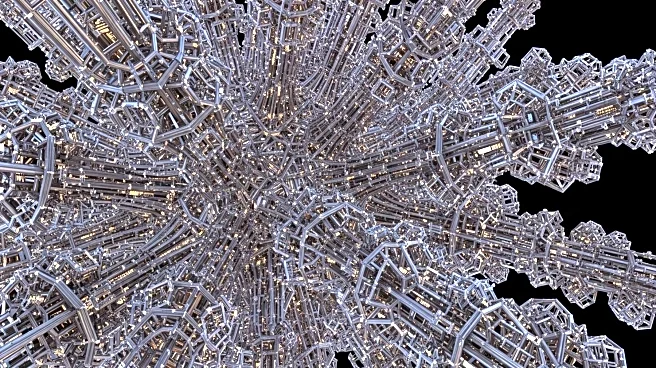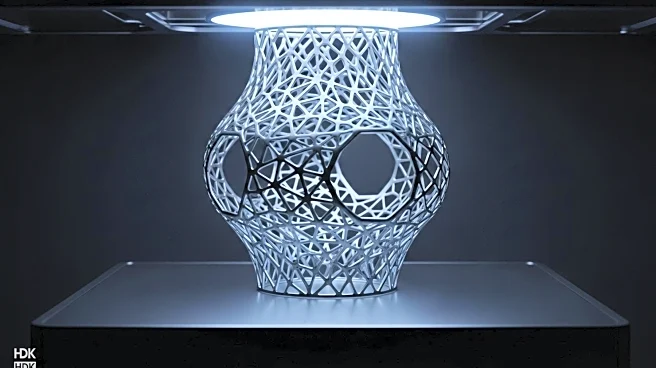What's Happening?
Researchers at North Carolina State University have developed a polymer structure resembling a 'Chinese lantern' that can transform into various three-dimensional shapes when compressed or twisted. This transformation is controlled remotely using a magnetic field, offering potential applications in robotics and mechanical metamaterials. The lantern is constructed from a thin polymer sheet, cut into a diamond-shaped parallelogram, with parallel ribbons connected by solid strips. The structure is bistable, meaning it can snap between two stable forms, storing and releasing elastic energy. The team has also attached a magnetic film to the lantern, enabling remote manipulation. The research, published in Nature Materials, was supported by the National Science Foundation.
Why It's Important?
The development of this shape-morphing lantern represents a significant advancement in the field of robotics and mechanical metamaterials. By enabling remote control of the structure's shape and stability, the technology could lead to innovations in robotic design, allowing for more adaptable and versatile machines. This could impact industries such as manufacturing, healthcare, and environmental monitoring, where robots with flexible and responsive designs are increasingly valuable. The ability to store and release energy efficiently also opens up possibilities for energy-saving applications, potentially reducing operational costs and enhancing sustainability.
What's Next?
The research team plans to explore the assembly of these lantern units into larger 2D and 3D architectures, broadening their application in shape-morphing mechanical metamaterials and robotics. Future studies may focus on optimizing the magnetic control and exploring new materials to enhance the lantern's functionality. Potential collaborations with industries interested in adaptive robotic systems could accelerate the commercialization of this technology, leading to practical implementations in various sectors.
Beyond the Headlines
The ethical implications of this technology include considerations around the use of shape-morphing materials in surveillance or military applications, where remote control and adaptability could be leveraged for strategic advantages. Additionally, the cultural impact of such innovations may influence public perceptions of robotics, potentially increasing acceptance and integration of robots in everyday life.










